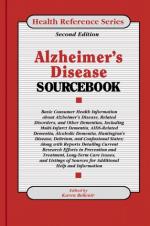|
This section contains 2,894 words (approx. 10 pages at 300 words per page) |

|
Alzheimer's disease (AD) represents a great challenge for science and medicine because of its prevalence, cost, lack of reliable treatments, and often devastating impact on individuals and caregivers. This age-associated chronic illness involves genetic risk factors, a well-defined clinical syndrome with a progressive course, evidence of dysfunction and/or death of populations of neurons, pathological and biochemical abnormalities, and intraor extra-cellular protein aggregates (Price, Tanzi, Borchelt, and Sisodia, 1998). Patients become severely disabled and often die of intercurrent illnesses. There are treatments for symptoms but no cure. However, recent research, particularly in animal models, has begun to provide new insights into the mechanisms of Alzheimer's disease and has identified new targets for therapy.
Clinical-Pathological Features of Alzheimer's Disease
In most cases of AD, the initial impairments of memory and cognition appear gradually during the seventh decade. The accuracy of clinical diagnoses improved from 1980 to 2000, and early diagnosis...
|
This section contains 2,894 words (approx. 10 pages at 300 words per page) |

|




